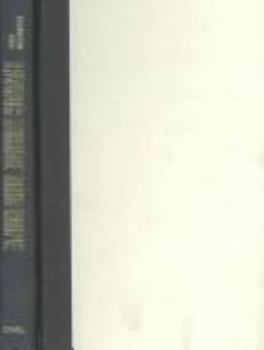Living Inside Our Hope
Select Format
Select Condition 
Book Overview
The photograph of three men spattered with red paint, their arms linked, marching to protest the Vietnam War, is an icon of the 1960s movement for social justice. David Dellinger is on one side, Robert Moses on the other. In the middle is Staughton Lynd, chairperson of the first march on Washington against the war, and former director of the Mississippi Freedom Schools. Thirty years later, Staughton Lynd here reaffirms ideas central to the New Left of the sixties: nonviolence, participatory democracy, an experiential approach to education, and anti-capitalism. In essays written between 1970 and 1995, he passionately defends the intellectual contribution of a movement often dismissed as mindlessly activist. In addition, he advocates direct, sustained involvement in meeting the needs of the working class and the poor. Each section of the book identifies major influences on Lynd's life as teacher, historian, lawyer, and organizer. In the section entitled ?Accompaniment,? Lynd suggests the relevance to the United States of the concepts of liberation theology which have revolutionized Central America. In ?Socialism with a Human Face,? he expresses continued allegiance to the socialist ideals exemplified by Simone Weil and E. P. Thompson. The final section, ?Solidarity Unionism,? deals with the self-activity of rank-and-file workers. Living Inside Our Hope will reach out to everyone who remembers the ideals of the sixties with nostalgia and to those, too young to remember, who are seeking a foundation on which to build their own social activism.
Format:Paperback
Language:English
ISBN:0801484022
ISBN13:9780801484025
Release Date:April 1997
Publisher:Cornell University Press
Length:312 Pages
Weight:0.97 lbs.
Dimensions:0.8" x 6.0" x 9.0"
Grade Range:Grades 11 to 12
Customer Reviews
2 ratings
Lynd's book is brimming with promising suggestions
Published by Thriftbooks.com User , 22 years ago
This is a great, great, book. Lynd looks at the failings of the sixties and seventies left movement and suggests ways that the Next Left can overcome them. It's prophetic, because the suggestions he gives are the strategies that the new youth leftist movement has come up with on it's own. What are these precious things? Lynd talks about how class was and is still important, about how workers' initiative still challenges the status quo. The usual sixties spiel is that workers have been coopted by capitalism and so are no longer progressive. Lynd comes back with the accusation that all the things that New Left people talked about regarding alienation, beurocracy, and the oppresion of modern society, are felt just as strongly, if not more, on the shop floor by workers as these things are by students and youth. The urge for living creatively and dropping out of society was felt by the working class during that time period too, and but was expressed by people trying to bend work towards those aims instead of by seperating themselves from it. Lynd, who has been a labor lawyer in the steel town of Youngstown Ohio for decades, says that not only are the critiques that people on the left in the sixties and seventies came up with applicable to working class life but that before McCarthyism some writers, like Simone Weil, were actually making those connections explicitly. This book touches on so many topics, from pacifism, to the role of religion, to workers' approaches to taking over vacant plants, to the role of law and of outside people coming into a community to aid struggles, that I can't summarize it in a small review. It's not a straight forward book, it's really a collection of essays, all of which should empower and enlighten.
A must read for anyone involved in the labor movement today.
Published by Thriftbooks.com User , 27 years ago
The importance of being in the labor movement for the long haul...The long distance runner...Not a flash in the pan, a shooting star, approach to solving working peoples problems... That is what I came away with after reading this book...We must live inside our hope...that is the key to winning the struggle!





